
Senior physics writer Emily Conover joined Science News in 2016. She has a Ph.D. in physics from the University of Chicago, where she studied the weird ways of neutrinos, tiny elementary particles that can zip straight through the Earth. She got her first taste of science writing as a AAAS Mass Media Fellow for the Milwaukee Journal Sentinel. She has previously written for Science Magazine and the American Physical Society. She is a two-time winner of the D.C. Science Writers’ Association Newsbrief award, and a winner of the Acoustical Society of America’s Science Communication Award.

Trustworthy journalism comes at a price.
Scientists and journalists share a core belief in questioning, observing and verifying to reach the truth. Science News reports on crucial research and discovery across science disciplines. We need your financial support to make it happen – every contribution makes a difference.
All Stories by Emily Conover
-
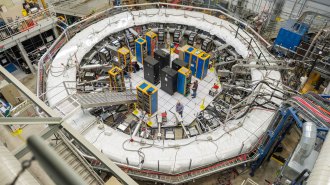 Particle Physics
Particle PhysicsMuons’ magnetism matches theory, easing an enduring physics conundrum
A puzzle over muons’ magnetic properties could have broken the standard model. But the theory bounced back.
-
 Science & Society
Science & SocietyTrump’s ‘Golden Dome’ plan has a major obstacle: Physics
Scientists suggest the missile defense plan will face big hurdles, especially given its projected timeline and cost.
-
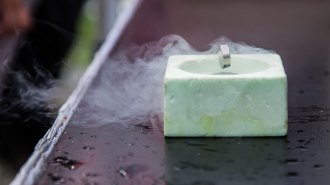 Physics
PhysicsScientists used a levitating magnet to hunt for dark matter
The quantum-based magnet technique could allow scientists to spot ultralight dark matter particles.
-
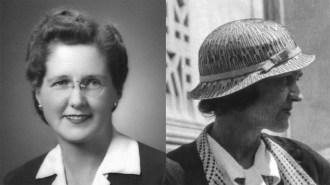 Quantum Physics
Quantum PhysicsThe unsung women of quantum physics get their due
The new book, Women in the History of Quantum Physics, spotlights the oft-forgotten contributions of women scientists in the field.
-
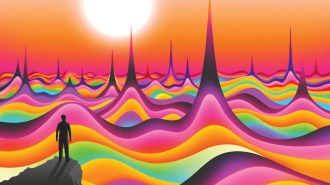 Quantum Physics
Quantum PhysicsAs quantum mechanics turns 100, a new revolution is under way
With greater control over the quantum realm, physicists are poised to make major leaps in quantum computing, quantum gravity and more.
-
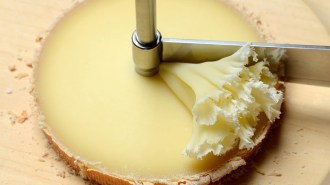 Physics
PhysicsPhysicists explain how cheese rosettes form
Rosettes made by scraping Tête de Moine, or “monk’s head,” cheese result from variations in the friction between the blade and the cheese.
-
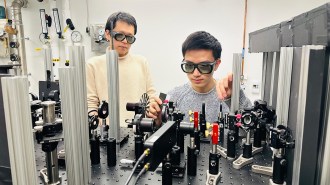 Physics
PhysicsImitation dark matter axions have arrived. They could reveal the real thing
A long-elusive, hypothetical subatomic particle called the axion can be simulated and potentially detected in a type of thin material.
-
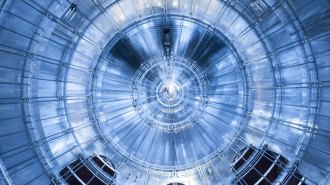 Particle Physics
Particle PhysicsNeutrinos’ maximum possible mass shrinks further
The KATRIN experiment in Germany nearly halved the maximum possible mass for neutrinos, setting it at 0.45 electron volts.
-
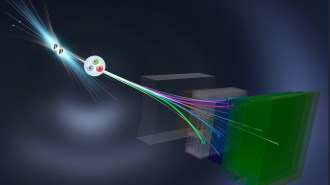 Particle Physics
Particle PhysicsPhysicists have confirmed a new mismatch between matter and antimatter
Charge-parity violation is thought to explain why there’s more matter than antimatter in the universe. Scientists just spotted it in a new place.
-
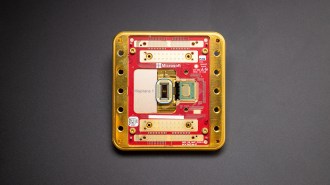 Quantum Physics
Quantum PhysicsPhysicists are mostly unconvinced by Microsoft’s new topological quantum chip
Majorana qubits could be error resistant. But after a contentious talk at the Global Physics Summit, scientists aren’t convinced Microsoft has them.
-
 Physics
PhysicsCalls to restart nuclear weapons tests stir dismay and debate among scientists
Many scientists say “subcritical” experiments and computer simulations make nuclear weapons testing unnecessary.
-
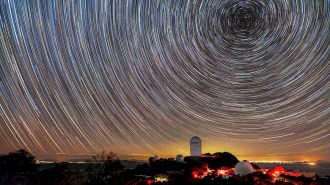 Cosmology
CosmologyA map of 14 million galaxies and quasars deepens a dark energy mystery
The DESI experiment shocked cosmologists with a hint that dark energy varies over time. Now, with more data, the conclusions hold up.